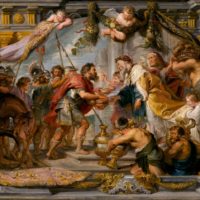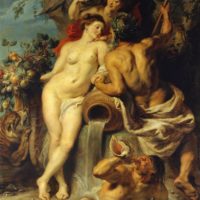| Painting Name | Massacre of the Innocents |
| Painter Name | Peter Paul Rubens |
| Completion Date | 1638 |
| Size | 199 cm x 302 cm (78.3 in x 118.9 in) |
| Technique | Oil |
| Material | Panel |
| Current Location | Alte Pinakothek (Munich Bavaria Germany) |
The first version of Massacre of the Innocents by Rubens was made in 1612. Here is represented the second version made in 1638, which resembles some similarities to the original while brutalizes some aspects even more than the first one.
The subject matter and the scene is elaborately described in the first version’s iconography. The second version is painted after 25 years of the first one and it hasn’t lost its impact. Actually, Rubens has made it more intense and gruesome than the first one.
More realistic approach than the first version
In here, the emphasis is on the use of weaponry to kill infant. In the first version, soldiers were depicted in a moment in which they were killing either snatching the infants from their mothers or banging them on the floor. There is only one soldier who has a sword in his hands.
In the current picture, mostly every soldier has some kind of weapon in his hand to attack on the mother or the child. The helpless mothers are giving up their lives to save their children.
There are some similarities with the background, too. In the first picture, the depicted incident is happening in a street. A building with three pillars is the nearest one. In second version, building with three pillars is still visible but it isn’t a street anymore. In the background we see other buildings.
The incident is happening in the late evening in the first version and that’s why we see more use of chiaroscuro technique in it. But, the second version doesn’t have much use of chiaroscuro as it is daylight.
Second version also includes angels on the top left corner watching over the massacre.
By these differences, we could conclude that Rubens was trying to explore and render the brutality of the massacre even more in depth and reality. He was trying to get the audience to see the realistic incident than the dramatic one, which he acquired in the first version.




